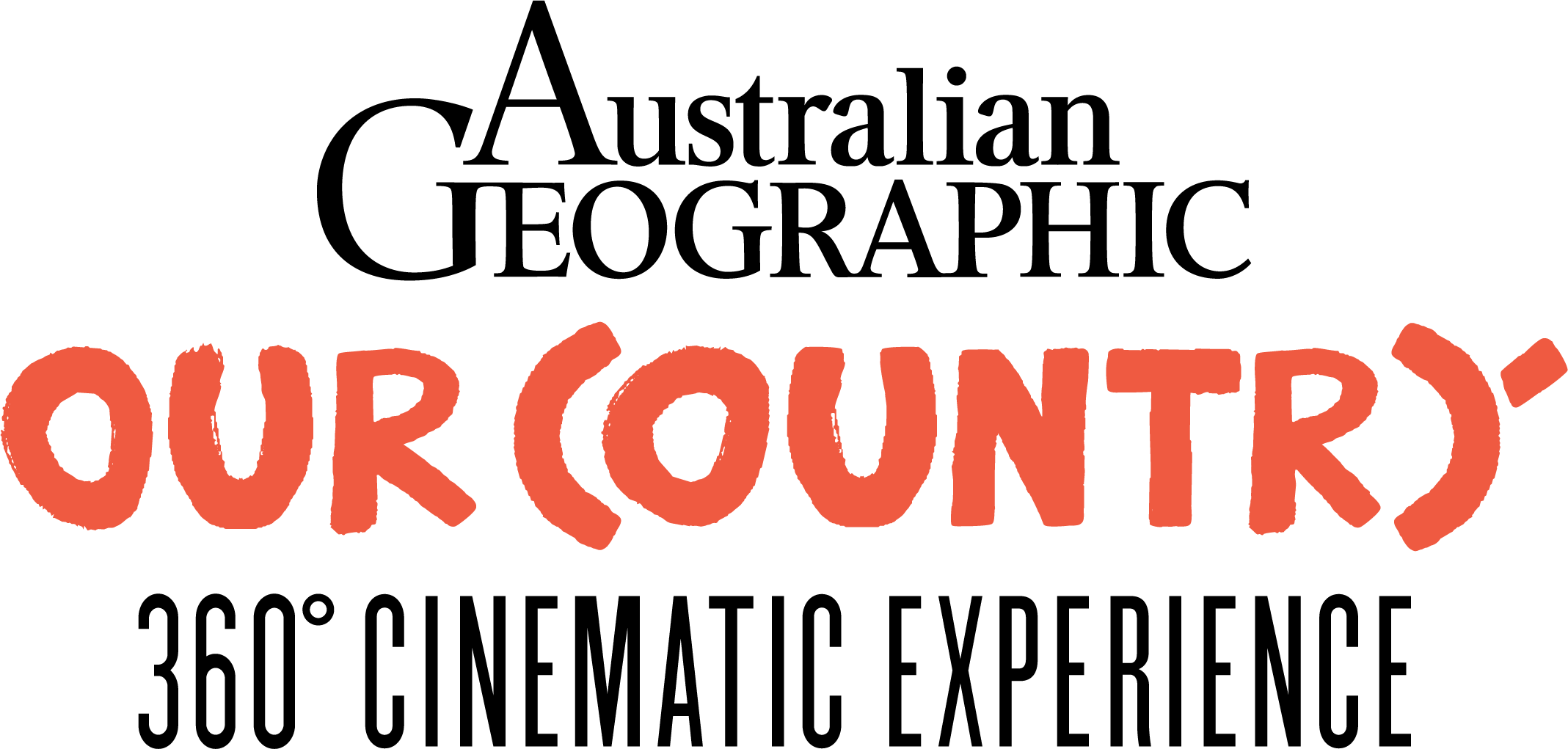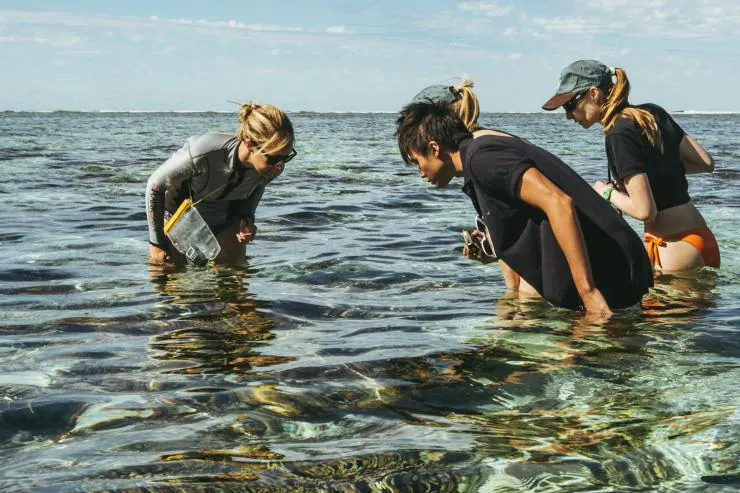
Travel Queensland – Immerse in Country
Words: Narelle Bouveng | Images: Emilie Ristevski and Jason Charles Hill
The dense rainforests and rugged escarpments of northern Queensland have been home to First Nations communities for more than 50,000 years. The area is rich with Dreaming stories of the ancient landscapes and literally thousands of rock-art sites, many of them relatively recent discoveries in the wilds that skirt the coast and penetrate deep inland. Aboriginal tourism has come a long way in recent years, and offers life-changing glimpses into the oldest continuing culture on the planet. Knowledgeable guides welcome the chance to share their stories and help visitors gain a better understanding of bush tucker, the healing power of nature, connection to Country and the symbolism behind the extraordinary works of art that are more popular than ever. Here are three unique experiences that offer a window onto the fascinating, important lives of First Nations people.
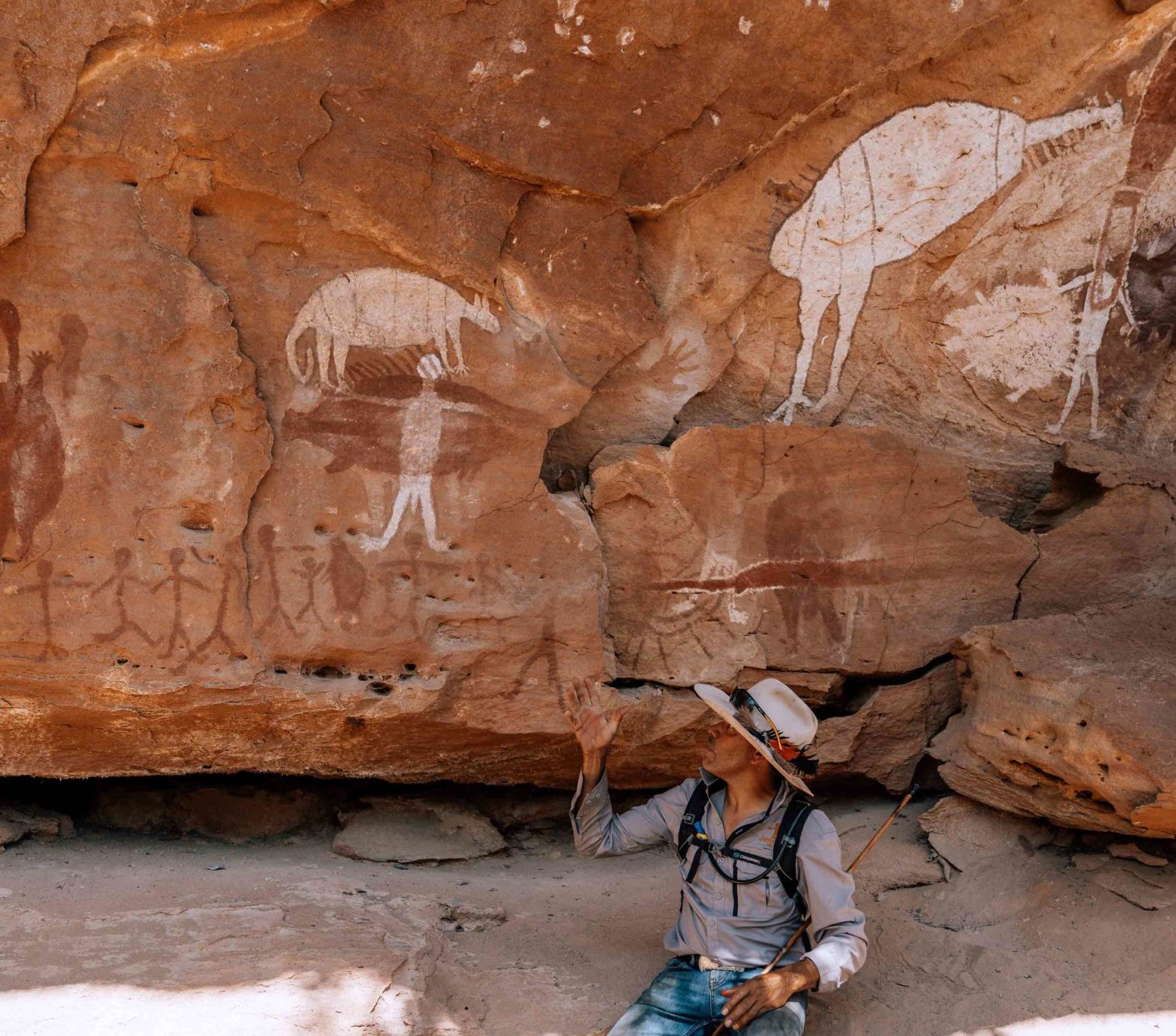
Magnificent Gallery. Image credit: Emilie Ristevski and Jason Charles Hill
Jarramali Rock Art Tours –
Western Yalanji Country, Cape York
The Laura to Maytown Coach Road on Cape York Peninsula may be revered as one of Australia’s toughest four-wheel-drive tracks, but to Kuku-Yalanji Traditional Owner and owner/guide of Jarramali Rock Art Tours Johnny Murison, it’s his regular twice-weekly commute.
The final 10km takes an hour, swallowed within the buckles and folds that weave through the rugged tangle of savannah plains, desert bloodwood, ironwood and melaleuca trees skirting the underbelly of the towering sandstone escarpments of Quinkan Country.
The region was historically recorded (post-colonisation) as the site of Queensland’s largest goldrush in 1873 when alluvial gold was discovered near the Palmer River. But more recently, Quinkan Reserve, 7610 sq.km of exclusive and non-exclusive native title and freehold land some 320 km north-west of Cairns, has been distinguished by the scale, volume and richness of its figurative art, leading UNESCO to claim it as the largest assemblage of prehistoric rock art on the planet and one of the top 10 most significant collections of Indigenous art in the world.
It’s through continued collaboration with Traditional Owners such as Johnny that insights into human occupation are being determined. As guests, we join him to garner our own insights, and, over two days, experience a guided tour beside him.
Johnny calls to his ancestors on approach to Western Yalanji Country. A welcome in traditional language follows the first glimpse of Camp Jarramali, sitting on the periphery of a vast escarpment with a vista of snaking rivers, burrowing gorges and remnant pockets of ancient rainforests meshing into the time-worn, rose gold–hued landscape. To the north, Rinyirru (Lakefield) National Park; to the south, Wulburjulbarr (Great Dividing Range); and to the west, Koolburra Plateau.
Sleeping arrangements are humble stretcher beds in tents anchored to the plateau. A communal shelter serves as the kitchen, while a rainwater-fed shower, campfire and toilet (sans door – “why shut out the view?” says Johnny), completes camp.
A communal shelter serves as the kitchen, while a rainwater-fed shower, campfire and toilet (sans door – “why shut out the view?” says Johnny), completes camp.
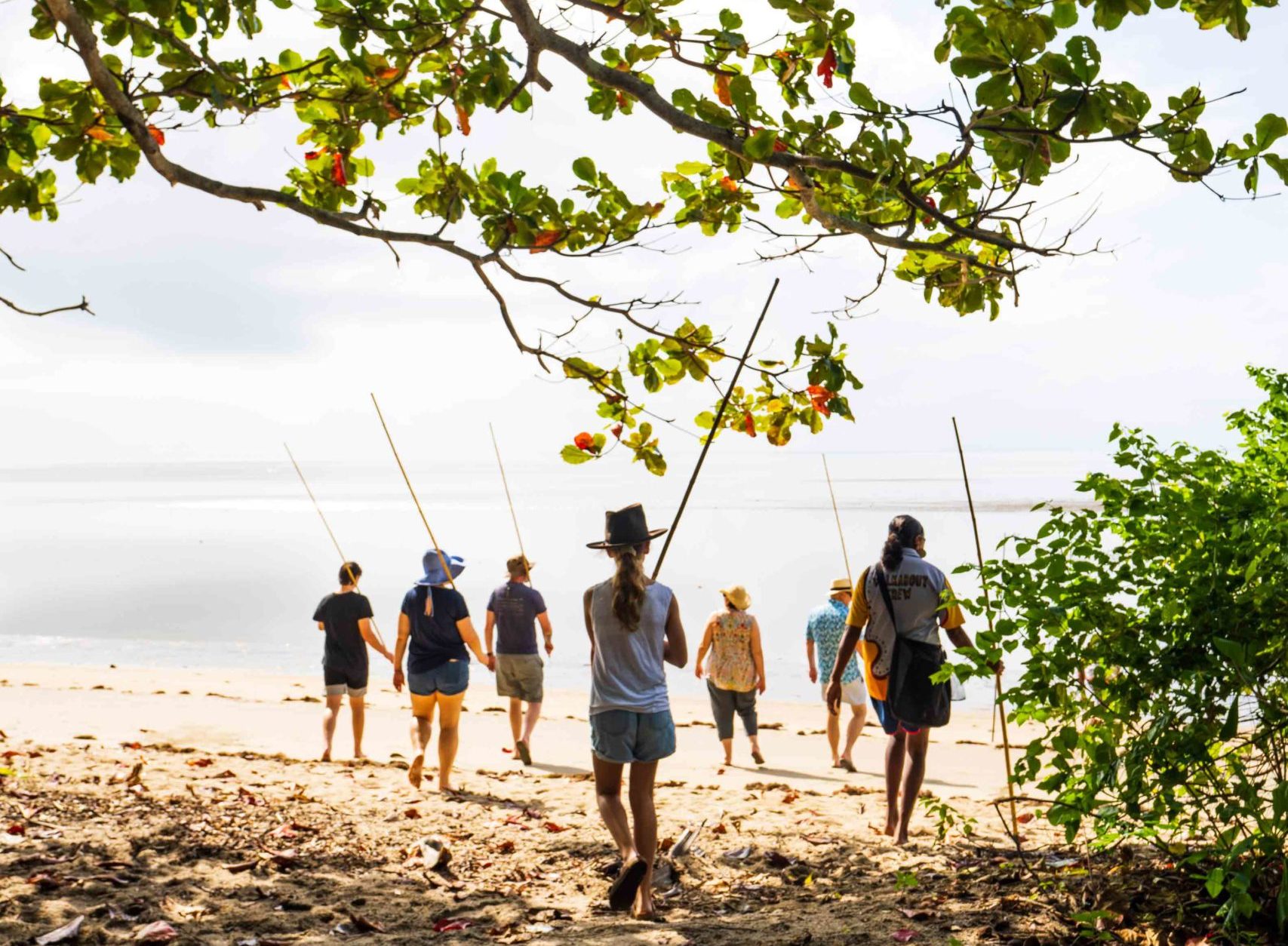
Cooya Beach. Credit: Narelle Bouveng
Our first short hike winds down an earthen track scoured beneath the same escarpment we sleep atop. The track takes us to Magnificent Gallery – a 40 x 7 m rock cave likened by archaeologists to a 20,000-year-old outback museum.
Exquisitely preserved and hauntingly beautiful, ethe- really tall Quinkans, slender Timaras and malevolent Imjims are depicted alongside grand Totemic Spirits merging human and animal forms. Johnny explains the abundance of animals – walkarr (goanna), kudi kudi (barramundi), ngujay (turtles) and julmbanu (kangaroos) – tells the story of plentiful bush tucker. And when my daughter points to smaller handprints, he connects the symbols of fertility above them, explaining many children were a blessing to his maja bama (ancestors).
“I still get goosebumps every time I visit, knowing it was my ancestors that immortalised my cultural heritage in ochre on these walls,” he says.
Johnny’s ability to read the bush is intuitive. Stopping regularly as if perusing a store, he crumbles sap from the
bloodwood tree, describing it as a powerful antiseptic, crushes flowers from the camphor-fragranced turkey bush to repel mosquitoes and leads us down tracks worn bare by wallabies to plunge into crystalline freshwater pools filled by waterfalls.
“Feel Country,” he tells us – and we do, in every part of our being, exploring such a wondrous playground.
Walkabout Cultural Tours –
Kuku Yalanji Country
Kuku Yalanji Traditional Custodian Juan ‘Karanba (Garunbah)’ Walker’s Country is the UNESCO World Heritage-listed Maja (Daintree Rainforest), 76 km from Cairns on Queensland’s northern coastline.
As an interpretive guide for 20 years, Juan shares knowledge and insights into the cyclic nature of the oldest surviving tropical rainforest on Earth from a perspective passed down from his marri-marri (ancestors).
Joining him in Jikalmu (Mossman), we reel through a ribbon of back roads trailing through thick tracts of rainforest, interwoven with cane farms and fruit orchards, en route to Julay (Daintree River). Stopping frequently to sample roadside bush tucker, Juan plucks a nest of yangka (green ants) so we can lick their vitamin C–rich abdomens before sampling the flowers from the petals of waruburra (native hibiscus). Pointing out bilngkumu (crocodiles) and sharing stirring Creation stories of how Country has been shaped, according to Kuku Yalanji Dreaming, Juan shares insights of his country that would otherwise go unappreciated or known.
It’s a landscape he is intrinsically and deeply connected to; Kuku Yalanji heritage dates back to some of the earliest human occupation in Australia. Juan’s father is Kuku Yalanji and his mother is of Torres Strait Islander descent; his heritage is representative of the merging of Australia’s two Indigenous cultures. As part of both the Saltwater and Rainforest peoples, he lives in spiritual, cultural and physical synergy with both land and sea.
The highlight of our tour is a visit to Kuku Kuyu (Cooya Beach), translating in traditional language as “many fishes”, and we learn by using Kalka (spears). Under Juan’s close tutelage, we will catch our own lunch.
“We only take from the land and the sea what we can carry and consume directly. This way, the ecosystem remains sustained”, Juan says before we begin.
Over the hour we hunt, our strikes at crabs and fish darting in the shallows prove futile, but we find our groove in the labyrinth of mangroves, collecting mottled periwinkles, semi-translucent butterfly pearls and mussels that serve as our delicious stir-fried seafood lunch. Afterwards, Juan shows us how to leave empty shells near a midden nearby, letting others who come after us know what’s been taken in abidance of Kuku Yalanji conservation principles.
“We are a part of the rainforest, and it is a part of us”, he says. “When people engage and connect with our culture they leave with an appreciation for our lifestyle, how we have adapted to modern living, and more genuinely, how to care for and respect Country. These are simple principles anyone can take away and apply to their own lives”.

Magnificent Gallery. Image: Narelle Bouveng
Talaroo Hot Springs –
Ewamian Country
Deep in the heart of Queensland’s remote Gulf Savannah, 320 km west of Cairns, an endless sweep of golden savannah grasslands muddle with eucalyptus and acacia, shrouding an ancient geological wonder that’s been bubbling away for millions of years.
As one of only two natural mound springs found in Australia and the only spring not fed by the Artesian Basin, Talaroo Hot Springs is revered as a natural phenomenon of outstanding geological significance.
For millennia, it’s been an important place of spiritual, physical and cultural significance to the Traditional Owners, the Ewamian people. It’s a region rich in culturally significant sites, with many instances of rock art, scar trees, occupation sites, stone grooving in waterways, bora grounds and ceremonial grounds.
Ewamian Elder Jimmy ‘JR’ Richards invites us to visit the springs. “A guided interpretive tour is the only way to access the springs; this has been requested by our Elders to ensure the true depth the springs hold in Ewamian culture are sensitively shared and the area protected for future generations”, he says.
“Traditional Owners are proud to share what we have here – an incredibly powerful place for spiritual and physical healing”, Jimmy says, pointing out the springs cascading down mounded travertine terraces that support a rich ecosystem of plants and aquatic animals and more than 200 bird species – some of which, he says, are new to science.
“At their hottest point, the springs bubble up from the earth at 62°C. They are the result of rainfall on the nearby Jorgensen Ranges seeping deep within the earth to collect over a period of up to 20,000 years. Geothermal forces heat the water and return it to the surface via the springs, which cool slowly as they trickle down through the series of mounds, forming a life-supporting oasis.” he says.
Johnny then points out the jaw of a carnivorous kangaroo entombed within the travertine, thought to have roamed the area up to 20,000 years ago when megafauna were present.
Our tour culminates in an obligatory soak in the communal springs pool, or a smaller private pool that can be pre-booked ahead for an extra fee. We bask in mineral-rich waters that naturally vary between 28°C and 40°C before cooled water is added to reach the perfect ambient temperature.
Camping and glamping facilities onsite, including a cafe, Yarning Circle and fire pit, encourage guests to linger longer so conversation and connection can deepen and the warm, Ewamian culture can be further shared.


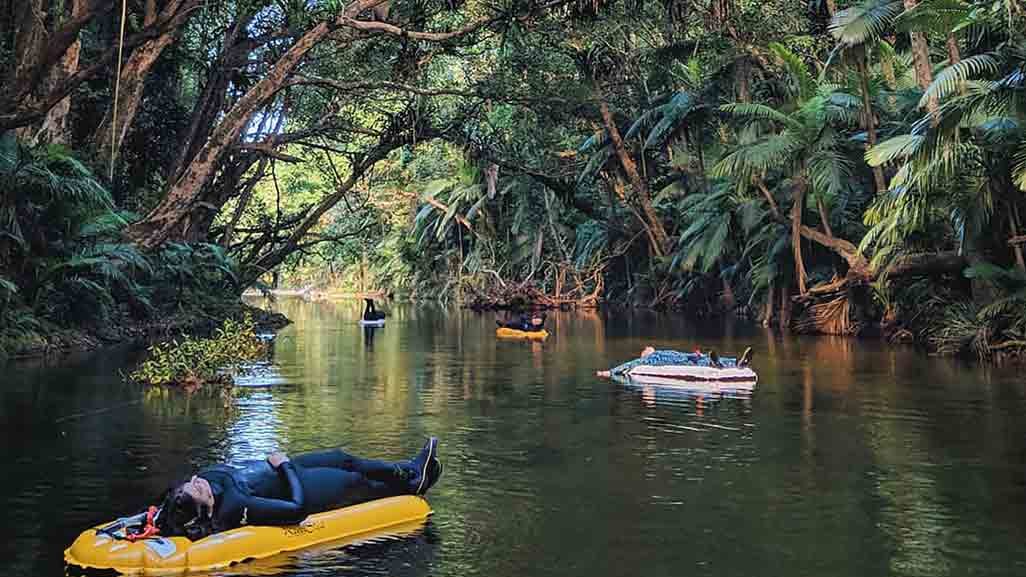
Tropical North Queensland. Image credits: Brad Newton/Tourism and Events Queensland, Tourism and Events Queensland, Back Country Bliss
How to Explore Tropical North Queensland
Exploring the Great Barrier Reef is the big drawcard for visitors to this region. There are plenty of other activities in North Queensland to extend that immersion in nature when you return to shore.

